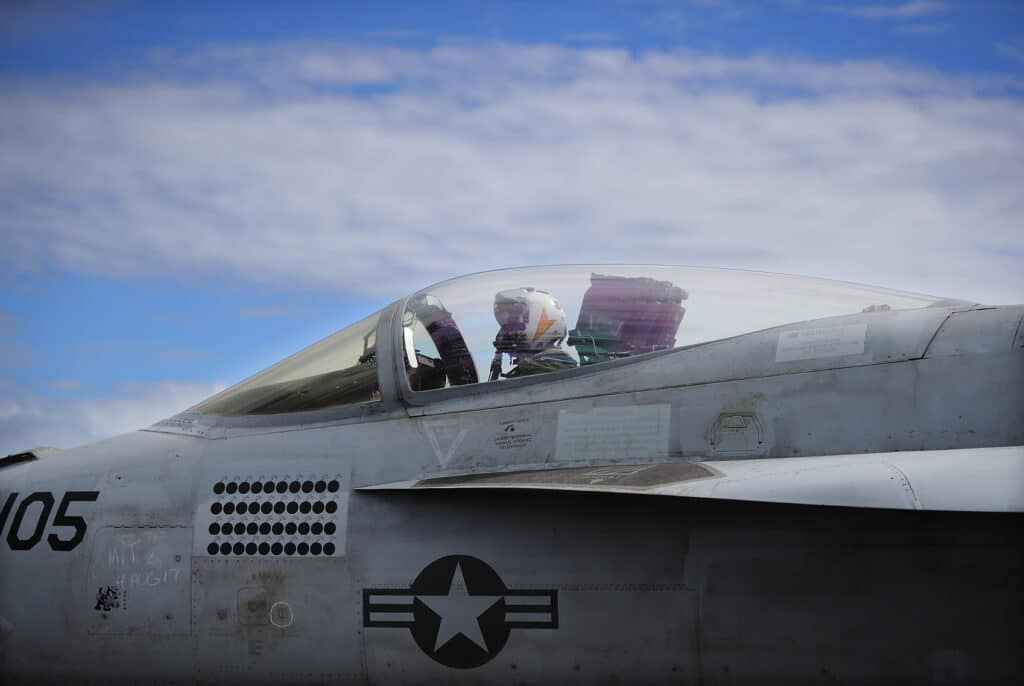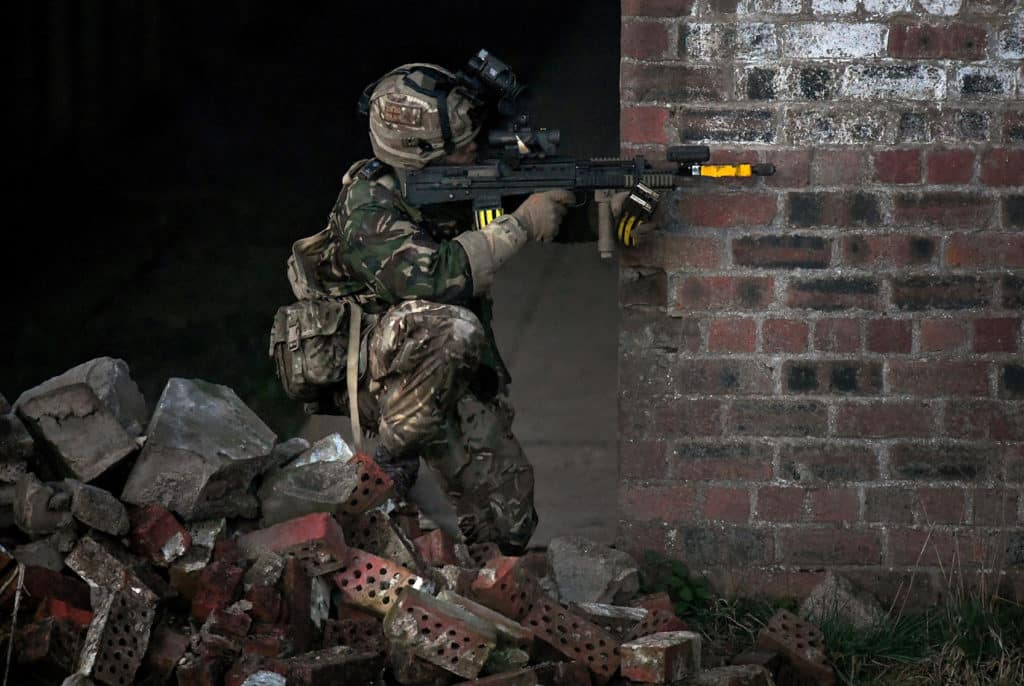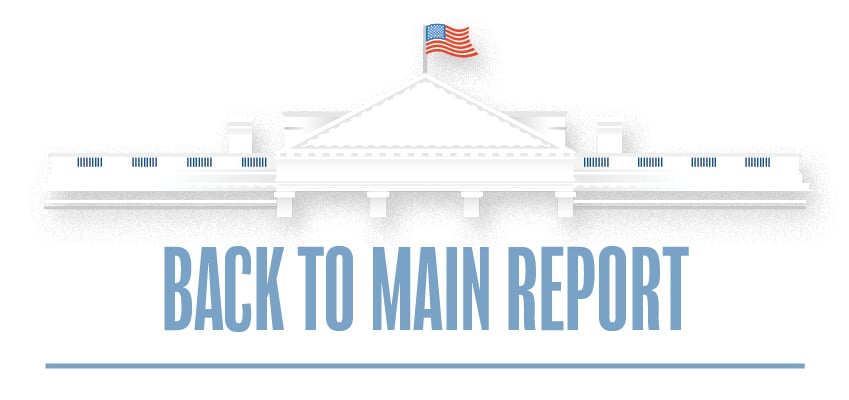January 31, 2019 |
Midterm Assessment: Defense
Contents
January 31, 2019
Midterm Assessment: Defense
Current Policy
The Trump administration’s 2018 National Defense Strategy serves as an effective guide to the Department of Defense’s objectives and strategy during Secretary of Defense James Mattis’ tenure. The National Defense Strategy begins with two premises: 1) The U.S. has displayed a dangerous degree of strategic complacency since the 1990s as great power competition reemerged; and 2) The United States has failed to make sufficient investments in military readiness. Consequently, the U.S. competitive military advantage has eroded.1
While the National Defense Strategy identifies China, Russia, North Korea, Iran, and terrorist groups as significant threats, the administration believes that the reemergence of great power competition with China and Russia represents the greatest challenge. A key component of this competition is an intense race to rapidly develop and deploy the latest technological advancements. Simultaneously, competitors have increasingly utilized tactics short of armed conflict (“gray-zone tactics”) to threaten U.S. interests and undermine the post-World War II international order that has facilitated international peace and prosperity.2
In response, the National Defense Strategy prioritizes three primary lines of effort: rebuilding military readiness and a more lethal force, strengthening alliances, and reforming the Defense Department’s business practices to improve agility, innovation, and efficiency.
Following the terrorist attacks of 9/11 and until recently, the Department of Defense did not receive the resources necessary to simultaneously accomplish current missions, maintain readiness, and modernize. The primary cause of this resource shortfall was the Budget Control Act of 2011, which led to ‘sequestration’ – across-the-board spending reductions without regard for strategic importance. While subsequent budget agreements provided modest relief, the Budget Control Act still resulted in hundreds of billions of dollars less in defense spending than originally planned.3
Over the last two years, with the aim of rebuilding U.S. military readiness and lethality, the Trump administration requested and received significant additional funding for the Department of Defense, reversing a seven-year trend. Specifically, in March 2017, to address urgent combat readiness shortfalls and accelerate progress against the Islamic State, the Trump administration requested $30 billion in additional Fiscal Year (FY) 2017 funding for the Defense Department. In its first full budget request, the Trump administration requested $639 billion for FY 2018 compared to the Obama administration’s FY 2017 request of $583 billion. For FY 2019, the Trump administration requested $686 billion – a 10 percent real increase over the previous continuing resolution level. For FY 2019, for the first time in years, Congress passed both the defense authorization and appropriation bills before the beginning of the new fiscal year. Over the last two years, the Department of Defense has used the increased funding to begin to halt the deterioration of U.S. military readiness and conventional military superiority.
In addition to this focus on military readiness, the Defense and State Departments have worked to reinforce key partnerships and alliances in the Middle East and Asia. The Defense Department has also worked with allies to expand the military readiness, capability, and capacity of NATO. With some success, the Trump administration has pressured NATO allies to spend more on defense. As it turns out, the defense spending of our NATO allies has actually been increasing since 2015.4 However, doubts about the president’s commitment to the alliance and collective defense have compounded concerns about NATO’s deterrence of Russian aggression.

An F/A-18 Hornet pilot prepares for take off during a joint military exercise aboard the USS George H.W. Bush on August 6, 2017. (Photo by Dan Kitwood/Getty Images)
Assessment
Congressional testimony less than a month after the president’s inauguration demonstrates the severity of the readiness challenge that the administration inherited. A failure to modernize had led to an “outranged, outgunned, and outdated” Army that could accomplish its missions only at “high military risk.”5 The Navy was the smallest in nearly a century, and “overall readiness [had] reached its lowest levels in many years.”6 The Air Force’s fleet was the oldest in the service’s history, with readiness “at a near all-time low.”7 Given these facts, it is not surprising that the congressionally mandated 2018 National Defense Strategy Commission concluded, “America’s ability to defend its allies, its partners, and its own vital interests is increasingly in doubt.”8
The congressionally mandated 2018 National Defense Strategy Commission concluded, “America’s ability to defend its allies, its partners, and its own vital interests is increasingly in doubt.”
This readiness crisis emerged over an extended period and will take years to reverse. Since 9/11, the pace of operations in Iraq and Afghanistan, as well as the bipartisan failure to provide sufficient, timely, and predictable funding, forced the Department of Defense to postpone modernization. Meanwhile, China and Russia studied American weaknesses, developed asymmetric capabilities, and modernized their forces.
On balance, thanks to a generally well-formulated strategy and increased funding, the administration has begun addressing America’s military readiness crisis. In April 2018 testimony, Chairman of the Joint Chiefs of Staff General Dunford testified, “we have begun to arrest the erosion of our competitive advantage,” citing investments in end strength, training, ammunition stocks, and modernization.9
In addition to these areas of focus, the Army has increased soldier deployment readiness and implemented key institutional reforms, including the creation of Army Futures Command.10 The Navy has invested in ship and aircraft depot maintenance and procured 22 battle force ships in FY 2017 and 2018.11 The Air Force has achieved weapons systems sustainment improvements, expedited acquisition processes, and eliminated a 4,000-airman maintainer shortage.12 The Marine Corps has met aviation combat readiness standards for the first time in years and achieved significant improvements in readiness rates for mission essential equipment.13
The administration has also taken initial and long overdue steps to modernize the U.S. nuclear deterrent – which includes the nuclear triad and associated nuclear command, control, and communications (NC3) systems.
In summary, the administration has made significant initial progress over the last two years to address America’s readiness crisis, but much work remains. The continued progress American security requires depends on Congress’ ability to provide sufficient, timely, and predictable funding.
A failure by the president to demonstrate an unambiguous and consistent commitment to allies will increase the chances that America’s men and women in uniform will be called upon to respond to unprovoked aggression.
The administration’s record with respect to alliances is more mixed. NATO’s military readiness is better today than it was two years ago. However, potential adversaries assess not only NATO’s military capacity but also its political will to respond to aggression. Periodic statements by President Trump have undermined alliance cohesion and generated troubling doubts about U.S. willingness to fulfill its Article 5 collective defense commitment. As Secretary Mattis’ resignation letter suggests, America’s alliances are a key U.S. grand strategic asset that must be nurtured – rather than a burden to be abandoned.14 A failure by the president to demonstrate an unambiguous and consistent commitment to allies will increase the chances that America’s men and women in uniform will be called upon to respond to unprovoked aggression.

Royal Marines take part in a raid during Exercise Joint Warrior on April 27, 2018 in Dalbeattie, Scotland. The exercise involved some 11,600 military personnel from 17 nations in one of the largest exercises of its kind in Europe. (Photo by Jeff J Mitchell/Getty Images)
Recommendations
- Ensure sufficient, sustained, and timely funding for the Defense Department. Consistent with the National Defense Strategy Commission’s recommendations, the administration should seek at least 3 to 5 percent annual real growth in the Defense Department’s budget for the next five years.15 The passage of the defense authorization and appropriations bills before the end of the fiscal year must not be an anomaly.
- Continue the National Defense Strategy’s readiness and business practice lines of effort. The National Defense Strategy’s lines of effort related to restoring U.S. military readiness and lethality, as well as reforming Department of Defense business practices, must continue. The Defense Department should prioritize continued progress related to financial responsibility to wisely spend tax dollars and help justify the increased defense budgets that U.S. national security requires.
- Focus more on China and Russia without losing sight of other key threats. While the Department of Defense’s focus on great power competition is warranted, thwarting future terrorist attacks on the U.S. homeland requires sustained whole-of-government pressure on jihadist networks overseas – depriving them of the safe havens to plan and launch large-scale attacks. Shifting finite resources to great power competition – while avoiding large-scale terrorist attacks on our homeland – will require the U.S. to continue the Defense Department’s carefully monitored and prudently implemented economy of force operations in the broader Middle East that support and keep faith with allies who have demonstrated a willingness to fight common enemies.
- Avoid premature withdrawals. A premature calendar-based withdrawal of U.S. military forces from Afghanistan and Syria would forfeit hard-won military gains, empower U.S. adversaries, endanger Americans, and increase the likelihood that U.S. forces will need to return in the future, and at greater cost.
- Strengthen America’s alliances. All administration leaders, including the commander-in-chief, should reiterate America’s ability and will to defend its allies and honor U.S. treaty obligations. The Department of Defense should continue to expand alliance military readiness, capacity, and capability. The administration should continue to press allies to spend the necessary amounts on defense but not undermine alliance cohesion and credibility in the process.
- Expand efforts to secure and strengthen America’s national security innovation and industrial base. Great power competitors have engaged in a systematic campaign of cyber theft and intrusion that targets American defense technology – undercutting America’s military superiority. As the Department of Defense seeks to field more innovative weapons more quickly, it must simultaneously redouble efforts with private industry and interagency partners to make it more difficult for adversaries to steal American defense innovations. This challenge extends well beyond the Defense Department and will require leadership from the White House and National Security Council.
- Prioritize nuclear modernization efforts to ensure a credible and reliable nuclear triad and deterrent. The Department of Defense is right to consider this our highest national security priority, but it must better explain to the American people the consequences of a failure to modernize our nuclear deterrent.
- Ensure freedom of navigation. To protect maritime routes vital to U.S. economic and security interests, the administration should expand freedom of navigation patrols in the South China Sea and Persian Gulf – seeking to make them multilateral where possible.
- Ensure missile defense capabilities. The administration should expand efforts to increase the reliability, capability, and capacity of the Defense Department’s missile defense systems.
- Improve the readiness of the United States and its allies to respond to gray-zone aggression. Competitors are using “economic coercion, political influence, criminal activity, military posturing, unconventional warfare, and information and cyber operations.”16 The United States, working with our allies, must develop more agile and effective responses.
